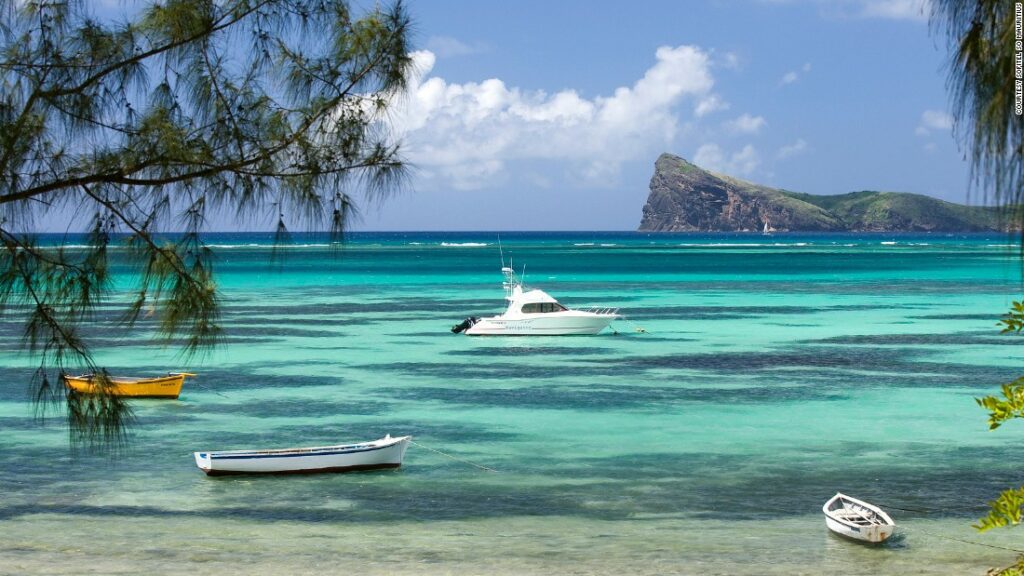Lagos, Nigeria(CNN) Mauritius, an island-nation nestled off the southeast coast of the African mainland, is known for its beautiful beaches and wildlife. Every year one million tourists travel to the island but not all are visiting for the scenery.
Around 18,000 “medical tourists” are taking the trip over the Indian Ocean to use the country’s hospitals. And the sector is growing, as heavy investments in infrastructure and human resources are underway to attract more foreigners.
“Most of the hospitals have been doing investment in terms of equipment, in terms of the specialty that they are also delivering,” Atma Narasiah of the Mauritius Board of Investment tells CNN.
Underwater waterfall and 13 other Mauritius must-sees
Underwater waterfall in Mauritius: Just off the coast of Le Morne mountain lies what appears to be a vast subaquatic cascade. It is in fact a trick of the eye, caused by the formation of sand and silt on the ocean floor.
Chamarel: On an exposed hilltop on the Chamarel plain, the earth takes on magical rainbow hues of purple, red, violet, green, blue and yellow.
Chamarel waterfall: Chamarel is also where a narrow waterfall plunges over a cliff. The Black River Gorges National Park nearby protects what remains of the island’s original rainforest.
Pereybere beach: Here the waters spill out toward a protected marine sanctuary, where the island’s ever-growing hotel developments cannot reach.
Le Morne: The mountain at Le Morne was once a refuge for escaped slaves. With cliffs on three sides, the beautiful mountaintop provided an easily defensible site.
The Creole House, Eureka: Located at the base of Le Pouce mountain, The Creole House in Eureka is a gorgeous colonial home with a restaurant serving great Mauritian food.
SSR Botanical Gardens: With towering palms and plant species from around the world, the Sir Seewoosagur Ramgoolam Botanical Gardens are a favorite picnic spot for Mauritians.
Central Market: Having undergone a makeover a few years ago, the Central Market in Port Louis is where to find fresh Mauritian produce as well as a food hall with fresh juices and local street eats.
Champs de Mars: Established in 1812, the Champs de Mars racecourse is in use for horse races from around April-time to November, when the weather is cooler.
Ganga Talao: Grand Bassin, or Ganga Talao, is considered to be a sacred place for locals, especially for the Hindu community in Mauritius.
Ganga Talao: Little temples are built along the lakeside including a shrine to Lord Shiva. During the Shivratri festival, more than half of the island’s population will make way to the lake to celebrate.
Labourdonnais Orchards: This grand plantation home was painstakingly restored in 2006. There’s now a museum exploring Mauritian landowners’ way of life and a restaurant serving delicious meals.
Place d’Armes: Whether faded or restored, the old colonial architecture of the main esplanade through Port Louis is a glorious highlight of the island’s capital.
Blue Penny Museum: A museum dedicated to a single stamp may not seem like the most riveting attraction, but the Blue Penny Museum presents an engaging overview of Mauritian history.
The Photography Museum: The culmination of Tristan Bréville’s lifelong passion for cameras, this personal collection of one million images documents the history of Mauritius, beginning with some of the earliest photos taken in Africa.
Aapravasi Ghat: Mauritius served as a depot for indentured labor migration between the early 1800s and 1900s. The buildings at Aapravasi Ghat are where thousands of Indian workers were processed.
Healthcare centers like Centre de Chirurgie Esthetique are taking advantage of the country’s attractions — the beauty, luxury and tranquility — to create clinics where visitors can feel at ease.
“The concept is being created to take care of people, to pamper them, till they feel well,” says Gérard Guidi, founder of medical center Centre de Chirurgie Esthetique.
Guidi says he established the medical center to cater to a select group of people: travelers who seek medical care in the midst of pleasure.
When Guidi founded Centre de Chirurgie Esthetique in 2000, he had only 3 hair transplant patients for the first few months. In 2016, his clinic had over 2500 patients, 85% of whom were foreigners.
The future of healthcare
Mauritius’s immigration policy encourages people from countries like India, China, and the US to visit as in most cases visas are issued on arrival. More than 36% of the medical tourists that arrived in 2016 were from France, as French is widely spoken.
However, medical tourism isn’t an industry without its critics. The International Medical Travel Journal (IMTJ) reported that African countries were losing huge amounts in revenue from outbound medical tourists seeking treatment in places like India, stalling the development of local health care.
Last year, Nigeria’s President Buhari was criticized for receiving healthcare in London.
For Mauritius, Narasiah sees the economic and healthcare potential. “We are trying to attract investors also from abroad to come and set up specialty hospitals, for example for treatment of cancer,” Narasiah tells CNN.
Source link : https://amp.cnn.com/cnn/2018/01/29/africa/mauritius-investing-big-medical-tourism
Author :
Publish date : 2018-01-29 08:00:00
Copyright for syndicated content belongs to the linked Source.
